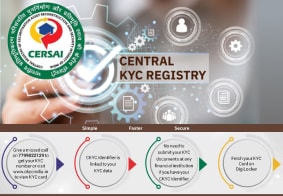CKYC Registry
-
Customer Service Contact us Service request Locate a branch
Find all the help you need
Scan the QR, get our app, and find help on your fingertips

Help CenterSupport topics, Contact us, FAQs and more
-
Login
Are you ready for an upgrade?
Login to the new experience with best features and services
-
Login
Are you ready for an upgrade?
Login to the new experience with best features and services
- Accounts
-
Deposits
IDFC FIRST Bank Deposits
View all Deposits -
Loans
IDFC FIRST Bank Loans
View all Loans - Wealth & Insure
-
Payments
IDFC FIRST Bank Payments
View all Payments -
Cards
IDFC FIRST Bank Cards
View all Cards - Blogs
- Corporate Account
-
Cash Management Services
IDFC FIRST Bank Cash Management Services
View all Cash Management Services - Supply Chain Finance
-
Corporate Lending
IDFC FIRST Bank Lending
View all -
Treasury
IDFC FIRST Bank Treasury
See more details - NBFC Financing
Support topics, Contact us, FAQs and more
- IDFC FIRST Bank Accounts
-
Savings Account
-
Corporate Salary
Account -
Senior Citizens
Savings Account -
First Power
Account -
Current Account
-
NRI Savings
Account -
TASC Institutional
Account -
Savings Account
Interest Calculator
- IDFC FIRST Bank Deposits
-
Fixed Deposit
-
Recurring Deposit
-
NRI Fixed Deposit
-
Safe Deposit Locker
-
FD Calculator
-
RD Calculator
- IDFC FIRST Bank Loans
-
Personal Loan
-
Consumer Durable
Loan -
Home Loan
-
Business Loan
-
Professional Loan
-
Education Loan
-
New Car Loan
-
Pre-owned Car Loan
-
Two Wheeler Loan
-
Pre-owned Two
Wheeler Loan -
Commercial Vehicle
Loan -
Gold Loan
-
Loan Against Property
-
Loan Against Securities
-
Easy Buy EMI card
-
Personal Loan
EMI Calculator -
Education Loan
EMI Calculator -
Home Loan
EMI Calculator
- IDFC FIRST Bank Wealth & Insure
-
FIRST Select
-
FIRST Wealth
-
FIRST Private
-
Mutual Funds
-
Sovereign Gold Bond
-
Demat Account
-
Term Insurance
-
Life Insurance
-
Health Insurance
-
General Insurance
-
Bonds
-
Loan Against
Securities -
Portfolio Management
Service
- IDFC FIRST Bank Payments
-
FASTag
-
Credit Card
Bill Payments -
UPI
-
Funds Transfer
-
Forex Services
-
Pay Loan EMI
- IDFC FIRST Bank Cards
-
Ashva :
Metal Credit Card -
Mayura :
Metal Credit Card -
FIRST Millennia
Credit Card -
FIRST Classic
Credit Card -
FIRST Select
Credit Card -
FIRST Wealth
Credit Card -
FIRST WOW!
Credit Card -
Deals
-
Debit Cards
-
Co-branded Cards
-
Credit Card
EMI Calculator -
FIRST Corporate
Credit Card -
FIRST Purchase
Credit Card -
FIRST Business
Credit Card
- Premium Metal Credit Cards
-
AshvaLifestyle1% Forex₹2,999
-
MayuraLifestyleZero Forex₹5,999
-
FIRST PrivateInvite Only
- Best for travellers
-
MayuraZero ForexMetal₹5,999
-
Ashva1% ForexMetal₹2,999
-
FIRST WOW!Zero ForexTravelLifetime Free
-
FIRST SWYPTravel OffersEMI₹499
-
FIRST Select1.99% ForexLifestyleLifetime Free
-
FIRST Wealth1.5% ForexLifestyleLifetime Free
-
Club VistaraTravelLifestyle₹4,999
-
IndiGo IDFC FIRST Dual Credit CardTravelLifestyle₹4,999
- Max benefits, Free for life
-
FIRST Classic10X RewardsShoppingNever Expiring Rewards
-
FIRST Millennia10X RewardsShoppingNever Expiring Rewards
-
FIRST Select10X RewardsLifestyle1.99% Forex
-
FIRST Wealth10X RewardsLifestyle1.5% Forex
-
FIRST WOW!RewardsTravelZero Forex
-
LIC ClassicRewardsInsuranceShopping
-
LIC SelectRewardsInsuranceShopping
- Reward Multipliers
-
AshvaLifestyleMetal₹2,999
-
MayuraLifestyleZero Forex₹5,999
-
FIRST ClassicNever Expiring RewardsShoppingLifetime Free
-
FIRST MillenniaNever Expiring RewardsShoppingLifetime Free
-
FIRST SelectNever Expiring RewardsLifestyleLifetime Free
-
FIRST WealthNever Expiring RewardsLifestyleLifetime Free
- Rewards & Credit on UPI
-
FIRST Power+FuelUPI₹499
-
FIRST PowerFuelUPI₹199
-
FIRST EA₹NVirtual1% Cashback₹499
-
FIRST DigitalVirtualUPI₹199
-
IndiGo IDFC FIRST Dual Credit CardUPITravelDual cards
- Fuel and Savings
-
FIRST PowerRewardsUPI₹199
-
FIRST Power+RewardsUPI₹499
-
LIC ClassicRewardsInsuranceShopping
-
LIC SelectRewardsInsuranceShopping
- Express and Flaunt
-
AshvaMetal1% Forex₹2,999
-
MayuraMetalZero Forex₹5,999
-
FIRST SWYPEMIOfferMAX₹499
-
FIRST MillenniaRewardsShoppingLifetime Free
- FD Backed rewarding Credit Cards for all
-
FIRST EA₹NVirtualCashback₹499
-
FIRST WOW!Zero ForexTravelLifetime Free
-
CreditPro Balance TransferTransfer & SaveReduce InterestPay Smartly
- IDFC FIRST Bank NRI Forex Solutions
-
Send money to India-Wire transfer
-
Send money to India-Digitally
-
Send money abroad
-
Max Returns FD (INR)
- IDFC FIRST Bank MSME Accounts
-
Platinum Current
Account -
Gold
Current Account -
Silver Plus
Current Account -
Merchant Multiplier
Account -
Agri Multiplier
Account -
TASC Institutional
Account -
Dynamic Current
Account -
World business
Account -
First Startup
Current Account
- IDFC FIRST Bank Business Loans
-
Business Loan
-
Professional Loan
-
Loan Against Property
-
Business Loan for Women
-
Working Capital Loan
-
Construction Equipment Loan
-
Machinery Loan
-
Healthcare Equipment Loan
- IDFC FIRST Bank Business Solutions
-
Payment Solutions
-
Tax Payments
-
Doorstep Banking
-
Point of Sale (POS)
-
Escrow Accounts
-
NACH
-
Payment Gateway
-
UPI
-
Virtual Accounts
-
As per amendment in the Income Tax Rules, PAN or Aadhaar are to be mandatorily quoted for cash deposit or withdrawal aggregating to Rupees twenty lakhs or more in a FY. Please update your PAN or Aadhaar. Kindly reach out to the Bank’s contact center on 1800 10 888 or visit the nearest IDFC FIRST Bank branch for further queries.
-
-
Most Searched
Sorry!
We couldn’t find ‘’ in our website
Here is what you can do :
- Try checking the spelling and search
- Search from below suggestions instead
- Widen your search & try a more generic keyword
Suggested
Get a Credit Card
Enjoy Zero Charges on All Commonly Used Savings Account Services
Open Account Now
Sending Money to India Made Secure and Simple: A Comprehensive Guide for Hassle-Free Transfers
Key Takeaways
For NRIs, sending money to India is easier now than ever, thanks to the multiple payment modes available.
Depending on your situation, you can send money through a wire transfer, online transfer, mobile banking platform, or foreign currency cheque.
It’s important to consider exchange rates and transfer fees for ensuring your money transfers to India are cost-effective.
With the growth of technology and globalization, sending money across borders has become easier, faster, and more affordable than ever. Whether you're supporting family back home, sending money to your own NRE or NRO account, receiving ESOPs-related payment from your overseas company, paying for educational expenses, or investing in India, there are now a variety of convenient methods to transfer money to India. Here’s a comprehensive guide on the options, tips, and considerations to make your transfer smooth and economical.
READ MORE
Choose the Right Transfer Method
There are several ways to send money to India. Here’s a look at the most popular ones:
Wire Transfers using Telegraphic Transfer or SWIFT:
All banks offer international wire transfers to Indian banks. They are secure and often provide a direct and traceable path for funds. However, bank transfers may take a few business days. While sending funds, it’s important not to convert but send the money in foreign currency to get the best exchange rate from the receiving bank. Also, keep a check on the wire transfer fee and correspondent bank charges.
Known for their secure and direct nature, SWIFT-based transfers connect thousands of banks and financial institutions across the globe, including those in India. Here's a more detailed look at how SWIFT transfers work, their advantages, and limitations, and what you should know before opting for this method.
Online Transfer Platforms
Online transfer platforms have become popular for their quick processing times. However, they usually have restrictions on high value transactions and lack a physical presence, making it difficult to track and retrieve funds if they do not reach the intended recipient. While these platforms may offer some unique selling points, such as upfront exchange rates, it is important to note that there are disclaimers attached and funds must be sent within a certain time frame to guarantee the exchange rate. It is advisable to consider the amount that the beneficiary or NRE account will receive rather than solely focusing on the forex rate and other features.
Overseas Bank’s Online or Mobile Banking Platform
Most overseas banks in the USA, UK, Europe, Australia, Singapore, and GCC countries offer international fund transfers through their online or internet banking service. Users can log into their overseas bank’s Internet banking platform to initiate international fund transfers for transferring funds to India. It is always advisable to initiate fund transfers in foreign currency, instead of INR, to get more value out of your foreign currency.
You will need the below details for seamlessly sending funds to an IDFC FIRST Bank account:
- Sender's details - Name, account number and complete address
- Receiver's details - Name, 11-digit account number* and complete address
- Receiver's bank details (example) – Bank Name – IDFC FIRST Bank, Swift Code – IDFBINBBIDV
Users are advised to choose charge code as ‘OUR’ in the fund transfer form to avoid correspondent bank charges. For FCNR Deposits, don't mention the account number in SWIFT but customer ID or Unique customer identification number e.g.10-digit customer ID / UCIC given by IDFC FIRST Bank. This will help in avoiding your funds from getting converted to INR. On receiving the payment from a foreign bank, most banks including IDFC FIRST Bank will convert and credit the money in the given account within 1 - 2 days.
Foreign Currency Cheque:
Most banks in India do not accept foreign currency cheques because of late realization of payments and risk of fraud and forgery in such instruments. Hence, this route is not recommended for users because of higher charges, high turnaround time to realize the funds, and high chances of rejection. Furthermore, by the time the cheque reaches the Indian bank, the cheque date could be nearing expiration.
Check Exchange Rates and Fees
When it comes to international transfers, two factors greatly affect the amount the recipient will actually receive: exchange rates and transfer fees. Here’s how to get the best deal:
Exchange Rates:
Transfer Fees:
Some platforms charge a flat fee, while others charge a percentage of the transferred amount. Be sure to check if the fee structure favours large or small transfers depending on your needs.
Different services offer varying exchange rates, and even small differences can impact the total amount received. Online services like Wise often provide real-time exchange rates close to the market rate, minimizing hidden charges.
Tip: IDFC FIRST Bank’s forex rates are among the best in the industry. Call your relationship manager or branch for the latest forex rate and offers.
Speed of Transfer
The urgency of your transfer can affect the service you choose. Here’s a quick overview:
Instant Transfers:
Same-Day/Next-Day:
Standard Transfers (1-3 Business Days):
Services like Western Union and MoneyGram can deliver cash almost instantly for in-person pickup, this is strictly monitored and have maximum limit of sending funds up to USD 2,000.
Some online transfer platforms like Remitly offer express services, typically at a higher cost, but deliver funds within a day. Note in case of wrong account or account not active may be a trouble and becomes difficult to track the funds and return may lose money.
Bank transfers and standard options like SWIFT or TT platforms generally take between one to three business days.
Tip: Plan ahead if the transfer isn’t urgent, as standard transfers often have lower fees compared to express or instant transfers.
Select a Secure Platform
Security is a top priority, especially when sending large sums of money to India. Ensure that the service you choose is licensed and regulated by financial authorities and it’s always recommended to use bank’s SWIFT channel. Look for services with added security features, such as two-factor authentication, encrypted transactions, and real-time tracking.
Leverage Offers and Promotions
To stay competitive, many money transfer platforms offer discounts or promotions for first-time users. These can include:
Reduced Fees:
Better Exchange Rates:
Loyalty Programs:
Many services waive the transfer fee for new customers.
First-time users sometimes get access to special rates.
Frequent transfers may earn you points or discounts on future transactions.
Tip: Sign up for alerts or newsletters from trusted transfer providers to stay informed about special offers.
Conclusion
Sending money to India doesn’t have to be complex or expensive. By selecting the right service, comparing fees and exchange rates, and being mindful of transfer speeds and security, you can ensure your funds reach your loved ones smoothly. As international money transfer services continue to evolve, staying updated on the latest offerings will help you make the most economical and efficient choice.
Disclaimer
The contents of this article/infographic/picture/video are meant solely for information purposes. The contents are generic in nature and for informational purposes only. It is not a substitute for specific advice in your own circumstances. The information is subject to updation, completion, revision, verification and amendment and the same may change materially. The information is not intended for distribution or use by any person in any jurisdiction where such distribution or use would be contrary to law or regulation or would subject IDFC FIRST Bank or its affiliates to any licensing or registration requirements. IDFC FIRST Bank shall not be responsible for any direct/indirect loss or liability incurred by the reader for taking any financial decisions based on the contents and information mentioned. Please consult your financial advisor before making any financial decision.
The features, benefits and offers mentioned in the article are applicable as on the day of publication of this blog and is subject to change without notice. The contents herein are also subject to other product specific terms and conditions and any third party terms and conditions, as applicable. Please refer our website www.idfcfirstbank.com for latest updates.























